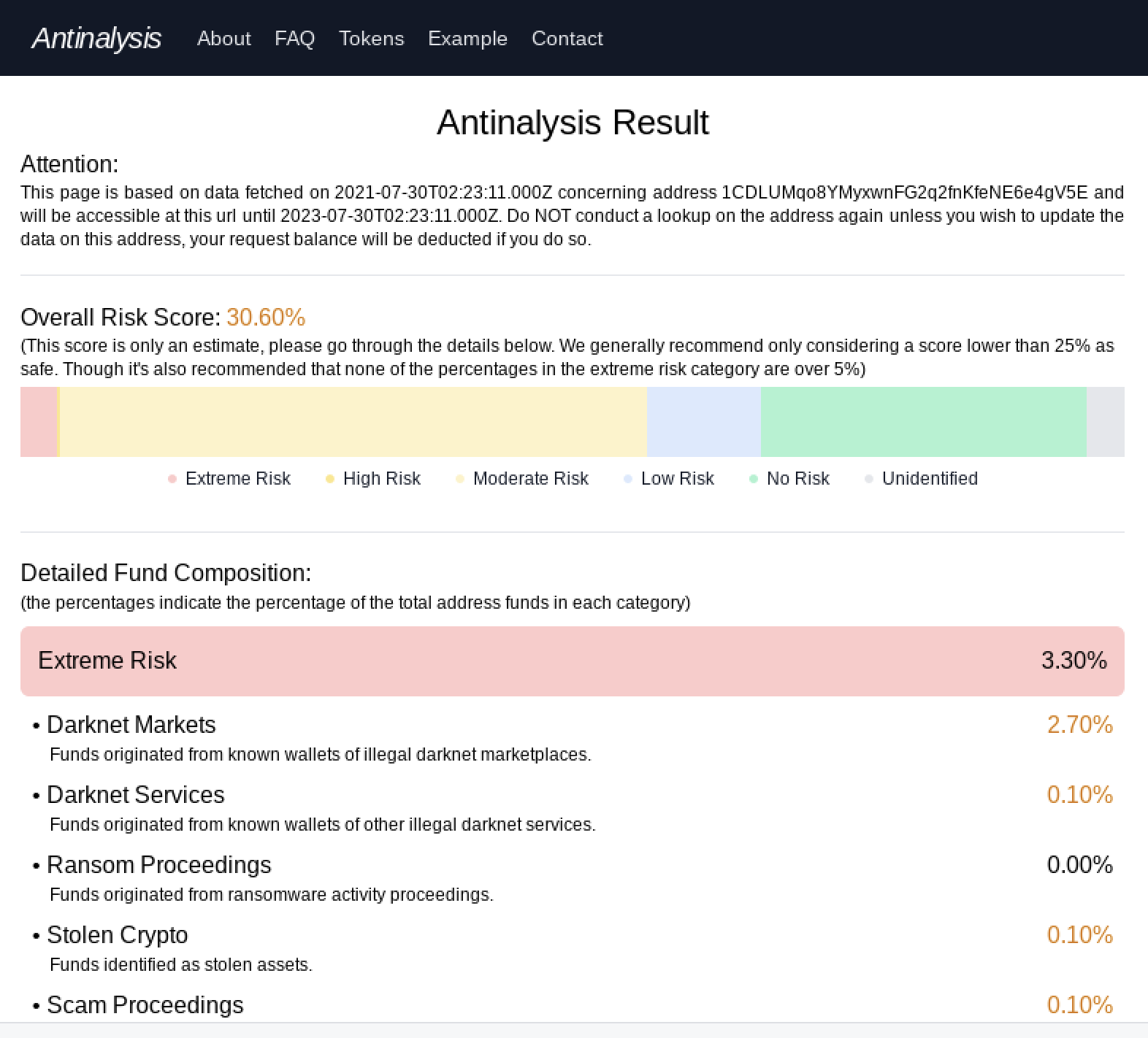Criminals Use ‘Antinalysis’ To Evade Bitcoin Tracking

Cyber-criminals increasingly using blockchain analytics tools to evaluate how well Bitcoin-laundering techniques are working, study finds
Cyber-criminals who make use of digital coins to maintain their anonymity are gaining increasing access to analytics tools that can aid them in their money-laundering methods, according to a new report.
Elliptic, which itself provides blockchain analytics services, said a new offering called Antinalysis shows how such tools are becoming increasingly important to cyber-criminals.
Antinalysis appears to be based on a service called AMLBot, which was initially advertised on Russian-language hacking sites in 2019, while Antinalysis, which appeared only recently, is marketed in English, according to Elliptic chief scientist and founder Dr Tom Robinson.
AMLBot is itself a reseller for another analytics provider called Crystal Blockchain, he said.

‘Antinalysis’
Antinalysis, like AMLBot, allows a user to check their Bitcoin wallet to see if the funds there could be identified as the proceeds of crime by investigators.
For a small fee the service delivers an overall “Risk Score”, along with a detailed breakdown.
“Proceeds of darknet markets, ransomware, and theft are considered to be ‘Extreme Risk’, while funds from regulated exchanges and freshly-mined coins are classed as ‘No Risk’,” Robinson said in an advisory.
He said that services of this kind were previouslyused primarily by regulated financial service providers.
So far, the tools appear to be “poor” at detecting links to criminal entities and illegal marketplaces, but they are likely to improve over time, he said.
“The tool represents a significant new capability for crypto launderers,” he wrote.
Money laundering
“They can now test their own laundering methods, be it the use of mixers or layering techniques, by screening their own Bitcoin wallet, before taking the risk of making a deposit at an exchange or other service provider.”
Besides the criminal purposes for which tools such as Antinalysis and AMLBot are primarily marketed, individuals or retailers could also use them to screen funds to ensure they’re not receiving the proceeds of crime, Robinson said.
Cyber-criminals can also make use of coins such as Monero, which offer heightened anonymity – so-called “privacy coins” – but such assets are far more difficult to use for purchases or to turn into mainstream currencies than Bitcoin, industry watchers say.
Anonymisation of Bitcoin is key to carrying out criminal enterprises, and investigators rely on following the chain of transactions recorded on the blockchain to trace hackers.
Bitcoin scam
For instance, US teenager Graham Ivan Clark is currently serving a three-year prison sentence in Florida for a Bitcoin scam that involved the hacks of celebrities’ Twitter accounts, including Kim Kardashian, Elon Musk, Bill Gates and Joe Biden.
The US Department of Justice said officers had “analysed the blockchain and de-anonymised Bitcoin transactions allowing for the identification” of those who carried out the scam.